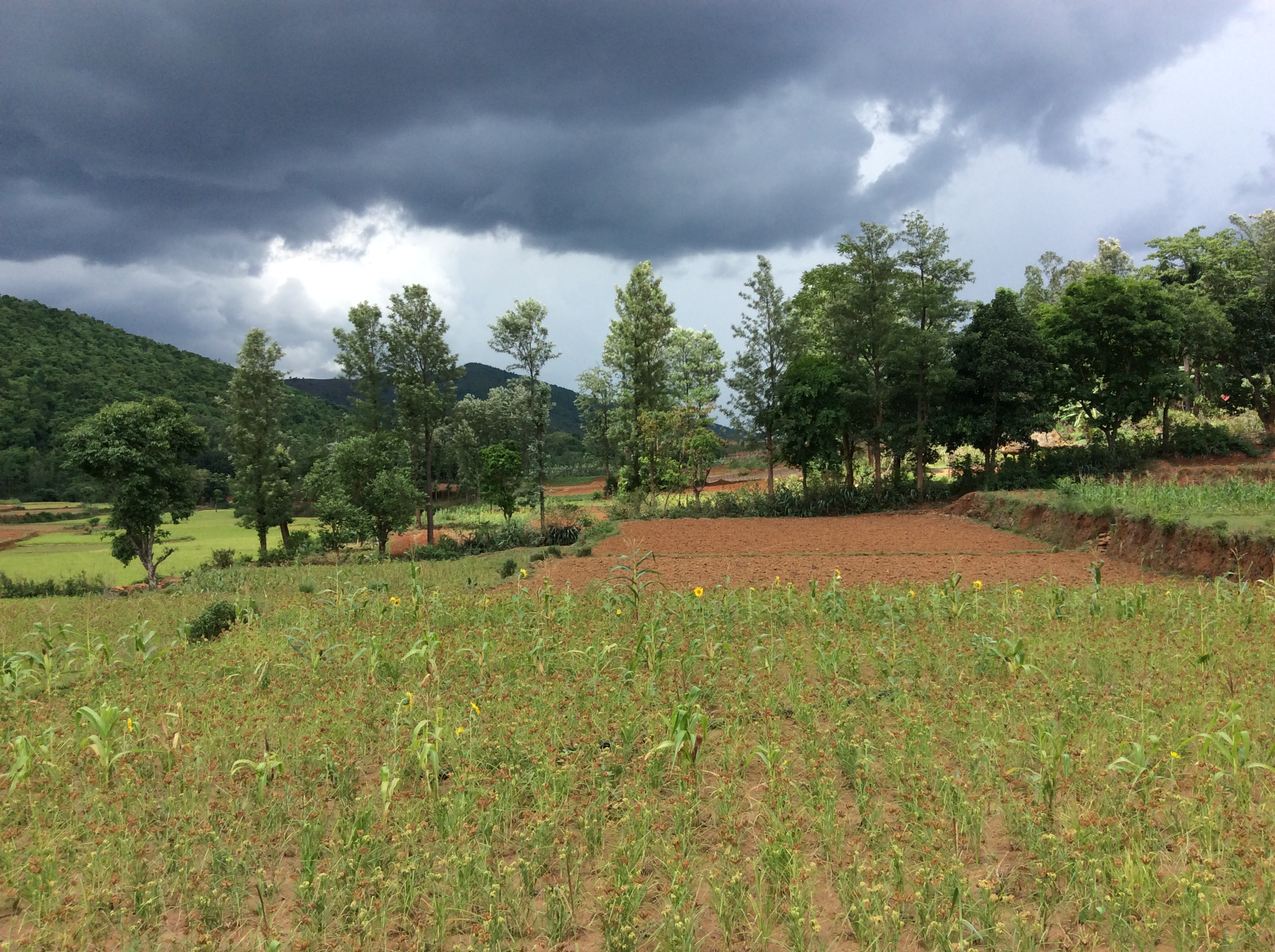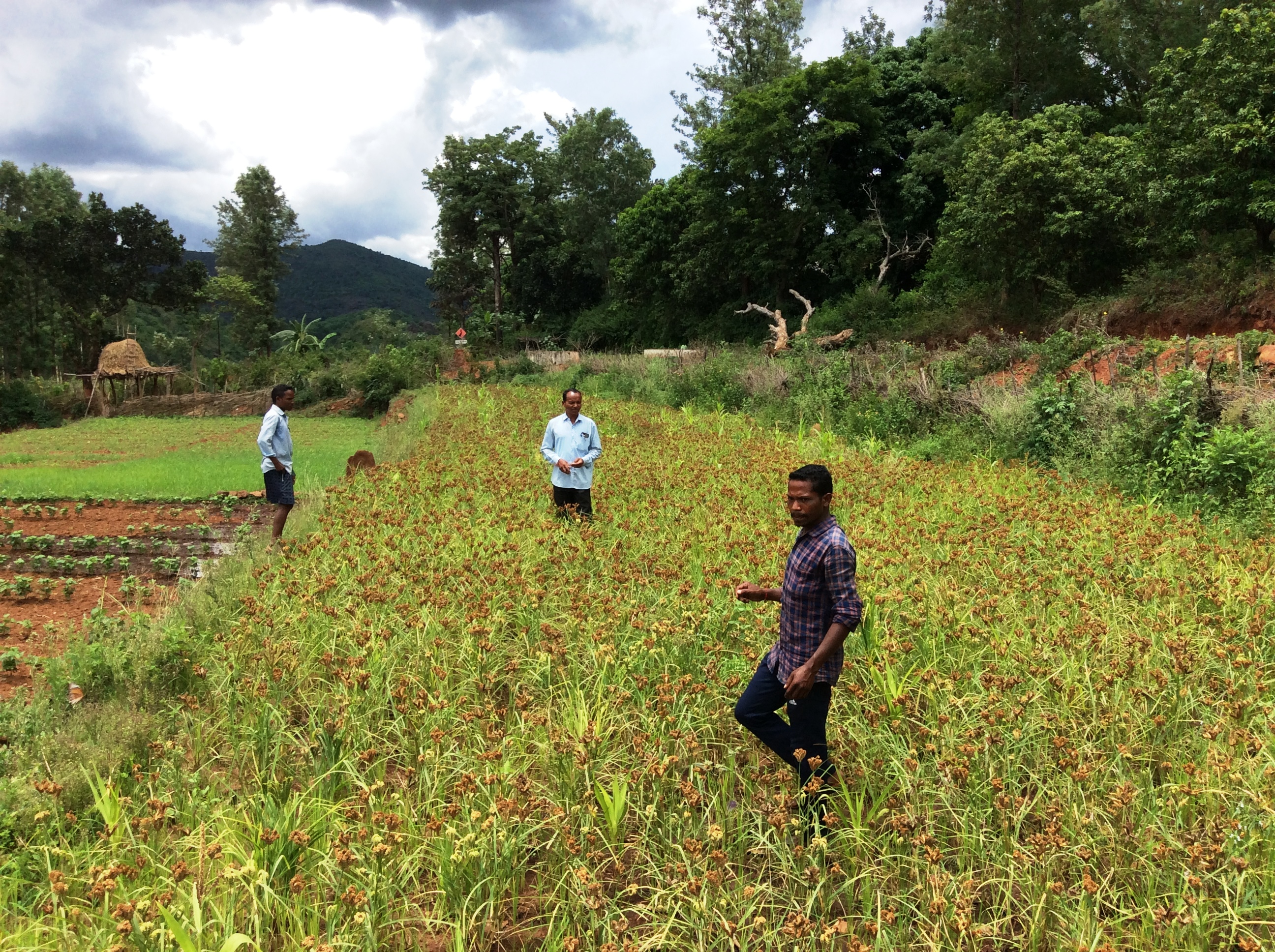
The Guli method of ragi cultivation is a scientific way of growing it with wider spacing between rows of crops. It has helped revive the important crop among
farmers. A report by Deepanwita Gita Niyogi
When Masaiah, a resident of Kusumi village in Srikakulam district of Andhra Pradesh, adopted the Guli method of ragi cultivation in his one-acre plot of land during the Rabi season four years ago, he scripted a success story.
In the month of January 2017, he witnessed a bumper yield of 14 quintals of ragi which was three times more than the productivity received from the conventional method of direct broadcasting. Gradually, Masaiah’s farm became a model plot for other farmers and agriculture officials.
In Andhra Pradesh, ragi is a major crop, along with paddy. But the traditional method of broadcasting or direct seed sowing produced low yields of three to four quintals of ragi per acre. However, after the Guli method of ragi cultivation was introduced from 2017 onwards, many farmers have recorded yields of up to 10-16 quintals per acre.
The Guli is a scientific way of growing ragi with wider spacing between rows of crops. It is helping revive millets in the tribal-dominated belts of the state like Araku where today the focus is on coffee and pepper vines for enhanced income.
The United Nations has declared 2023 as the International Year of Millets. Thankfully, with this the focus on millets has been revived. There was a time when millets were categorized as coarse grains fit for consumption by the poor. Over the years, lucrative crops like cotton and maize replaced millets.
Farmers too abandoned millets due to low yields, lack of minimum support price, absence of processing facilities and zero market linkages. But today millets have been recognized as climate resilient crops.
Switching over to Guli ragi
Initially, a few small-scale farmers adopted the Guli method of ragi cultivation. At present, thousands of farmers have adopted the method across several districts of Andhra Pradesh.
WASSAN, a Hyderabad-based non-profit, is steering the process in 25 clusters of three districts in the northern coastal belt and two districts in the arid Rayalaseema region of the state. Several local organizations are also working towards championing ragi under the state government’s zero budget natural farming initiative, a chemical-free farming method, inspired by traditional practices.
WASSAN programme manager Sanyasi Rao, based in Vishakhapatnam, said that Guli method of ragi cultivation was scaled up in Andhra Pradesh from 2017 onwards. During the Kharif season of that year, the method was scaled up in Visakhapatnam, Vizianagaram and East Godavari districts. A total of 712 farmers tried this method covering 508 acres. A crop cutting experiment conducted in the field of farmer Samareddy Mahadev of Hukumpeta mandal of Araku on November 25, 2017 resulted in a yield of 14.08 quintals per acre.
Two years later, during the Kharif season of 2019, 1572 farmers adopted the Guli method in 845 acres to cultivate ragi. For checking the yields, 85 cross cutting experiments were carried out in Visakhapatnam, Vizianagaram and East Godavari districts.
“The ragi plants have now more tillers and healthier panicles. Farmers who adopted this practice are getting good yields. A few are also growing sunflowers as intercrop in ragi fields for extra income,” Rao added. This is a common practice in Dumbriguda mandal of Araku where ragi crop intercropped with sunflowers can be seen.
In the last Kharif season, the Guli ragi method spread to 3500 acres in Andhra involving 5000 farmers under the zero budget natural farming programme. However, it is no more monocropping of ragi as farmers are experimenting with jowar and maize apart from sunflowers.
From fields to plates
Besides increasing the production of ragi, the aim was also to promote its consumption at the community level through well-made strategies. Focus was laid on spreading awareness on the nutritional value of all millets, including minor millets, popularizing millet-based recipes, building linkages with local flour millers for processing and ensuring the availability of millets at household levels. Efforts were also made to introduce millet-based recipes at anganwadi centres.
Though consumption of ragi was once common among the millet growers in the north coastal and the arid Rayalaseema regions, over the years its intake drastically declined leading to malnutrition.
To promote millet consumption, particularly among women and children for nutritional intake, apart from organizing rallies involving school children, members of local self-help groups and farmers were selected for training on making delicious millet items.
Women acted as resource persons at cluster levels and tried to spread awareness among the community on the importance of millets. On the whole, 30 women acted as community campaigners and organized recipe contests in several villages. In 25 clusters of Rayalseema region and the coastal belt, women covered 1394 families.
Limited availability of processed millets in the market is one of the main reasons behind low consumption. Keeping this in mind, the local rate of millet processing was explored with members of self-help groups. An action plan was prepared with help from women members for increasing the availability of processed millets in villages.

Locally, women process millets at home with the help of stone and wooden grinders. It is a laborious process. To help them, suitable changes were made in available machines in the market so that these could be used at the household level by women to process little millets. In some places, a few women came forward and offered to process millets on a service basis.
Jacob Nellithanam, who works with farmers across India, said that he organized a workshop in Karnataka on Guli ragi. After that the method was implemented in Vishakhapatnam and Vizianagaram which involved training to farmers. For the Guli method, bullock-driven tools are needed. It is convenient to adopt the practice in low rainfall areas and is hence, ideal, for dry places.













